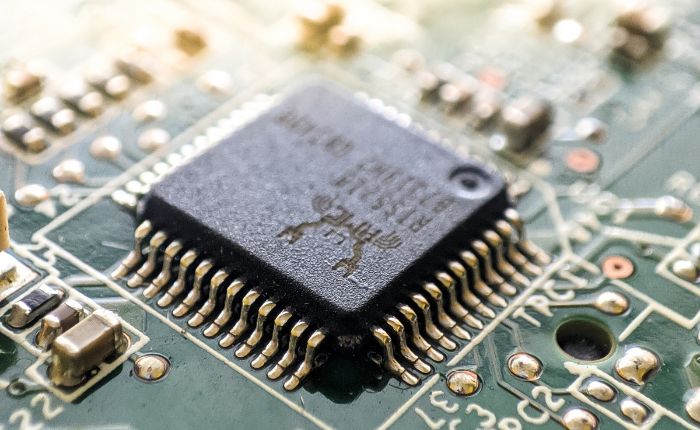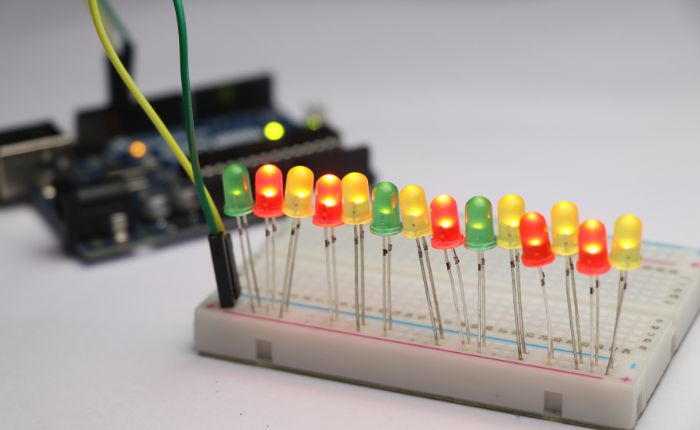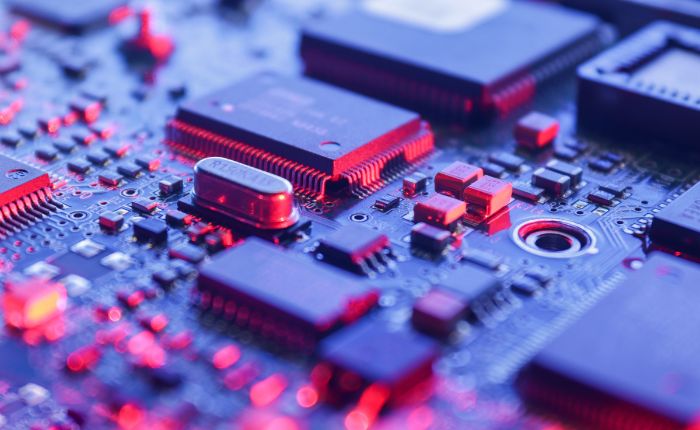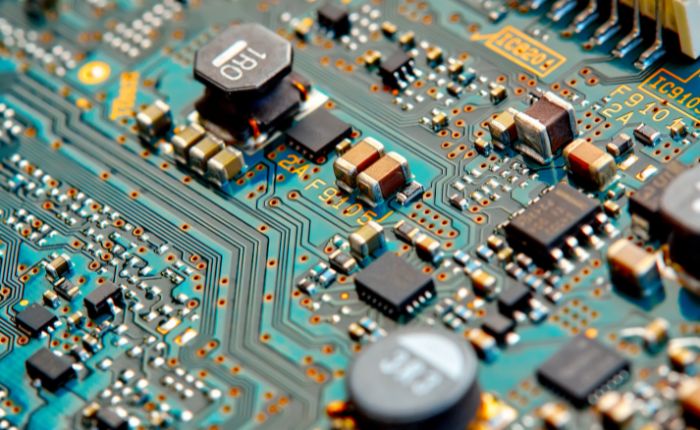
Semiconductors: what they are, what materials they use, and what they are used for
Semiconductors: what they are, what materials they use, and what they are used for
Technology for our everyday lives
Technology for our everyday lives
Semiconductors are essential materials when it comes to manufacturing smart phones, computers, cars, refrigerators, really any electronic device. They allow or don't allow an electrical current to pass, a necessary function when building microchips and electronic circuits.
What is a semiconductor?
What is a semiconductor?
Semiconductors are materials that allow electrical currents to pass depending on factors such as surrounding temperature or the magnetic field they are subjected to.
In today's society, semiconductors are essential in the manufacture of a large number of electronic components we use daily, such as diodes, transistors, and integrated circuits. They are also essential in devices such as mobile phones, computers, and solar panels.
Unlike conductors, which only conduct electricity, semiconductors also serve as insulators.
Characteristics of semiconductor materials
Characteristics of semiconductor materials
Their versatility and unique properties make semiconductors essential materials for the development of devices we use every day, from cellphones to computers to power systems. In this context, understanding what sets them apart and how they work is key to appreciating their technological importance.
- Variable conductivity: their ability to conduct electricity changes depending on external factors such as temperature, light, or pressure.
- Doping: through the controlled addition of impurities (doping), the amount of charge carriers is modulated, adjusting their conductivity.
- Directional conduction: they allow the passage of current with different ease depending on the direction, which is essential for components such as diodes and transistors.
- Sensitivity to light and heat: their conductivity can vary when exposed to light or heat, making them useful in sensors and solar cells.
Normally semiconductors are made of silicon (Si) and germanium (Ge), elements commonly found in nature, however semiconductors can also be made from sulfur (S), boron (B), or cadmium (Cd).
Types of semiconductors
Types of semiconductors
Depending on their purity, semiconductors are classified into two groups. This classification is critical for understanding their behavior and applications in electronic devices.
- N-type or donors: In the doping process, a specific type of atom is added to the semiconductor to increase the number of free-moving negative charge carriers (or electrons). They are called "n-type" for the negative charge of the electron.
- P-type or acceptors: They are created by adding a certain type of atom that increases the number of free-moving positive charge carriers (hole through which electrons flow, creating an electrical current). They are called "p-type" for the positive charge they produce.
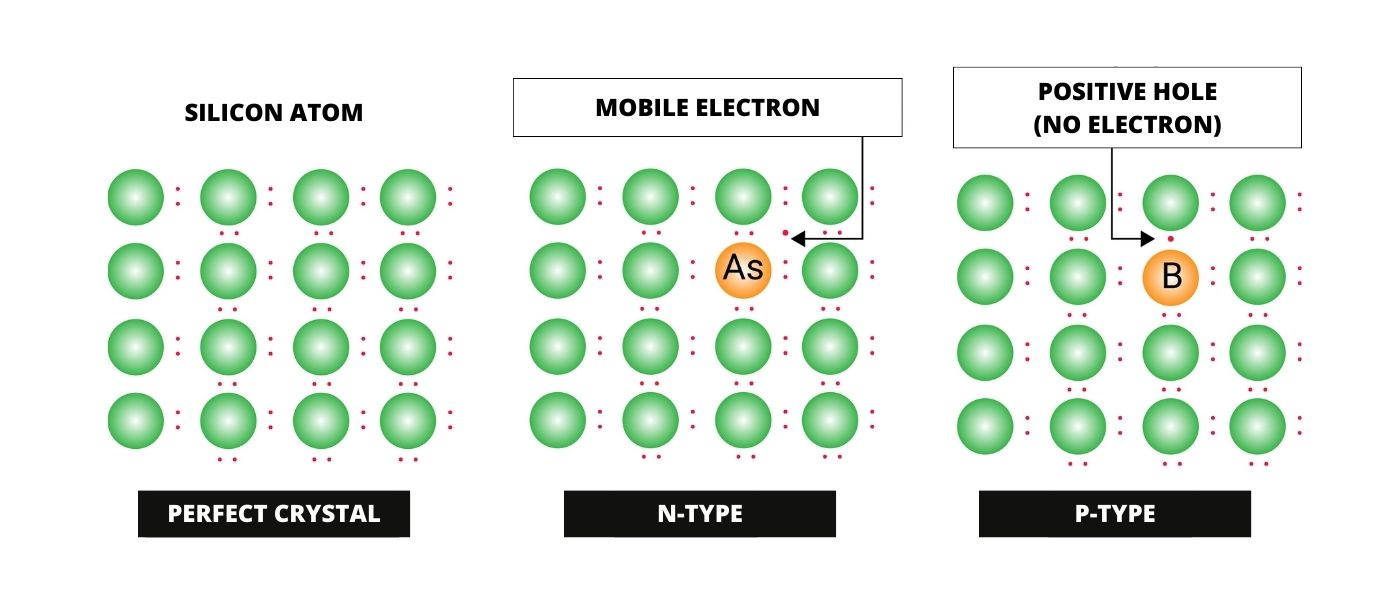
What is the semiconductor crisis and how could it affect us?
What is the semiconductor crisis and how could it affect us?
The semiconductor crisis refers to the global shortage of microchips and electronic circuits, although it's a bit more complicated than that. Since late 2020, after the start of the pandemic and lockdowns, the demand for electronic devices has skyrocketed.
Several factors have contributed to this:
- First, remote work, online classes, and digital pastimes have caused enormous growth in the demand for computers, tablets, and smart phones.
- Additionally, there are several industries (automobile, aeronautics, appliance, etc.) that depend on semiconductors for their own production goals.
- A third factor exaggerated this. During lockdowns, semiconductor manufacturers were under limited operations, so really since early 2020 there has been a shortage that slowly has worsened over time.
- At the same time, in the last two years, digitalization and new technological advances have led to disruptive technologies such as cloud services, Big Data, Advanced Virtual Reality, blockchain, and 5G technology.
We experienced a moment in which electronics were in high demand from both industry and consumers, and even up until now, we are not able to manufacture at the rate the market is growing. This has all culminated in a global semiconductor shortage crisis. As a response, US and Asian multinational companies, the major markets, are opening new plants to help seek market equilibrium, although it will take some time to balance supply and demand.
Examples of semiconductors and their applications
Examples of semiconductors and their applications
Let's have a look at some examples of semiconductors and their applications:
